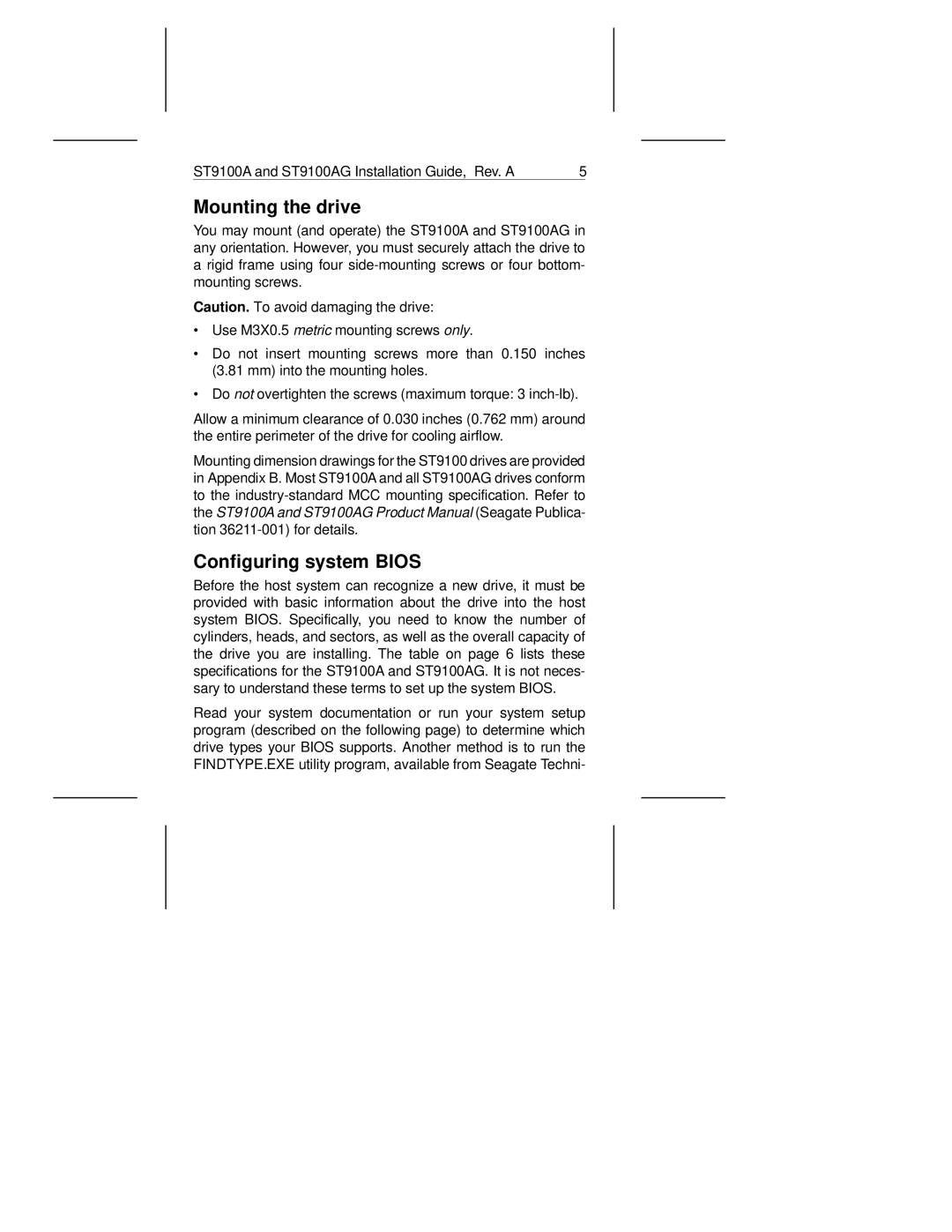ST9100AG, ST9100A specifications
The Seagate ST9100A and ST9100AG are notable hard drives that belong to the Seagate Barracuda family, which has been recognized for its performance and reliability in the storage market. These drives are designed to meet the demands of both desktop and mobile applications, making them a versatile choice for users looking for dependable storage solutions.One of the main features of the ST9100A and ST9100AG is their high storage capacity, offering up to 1 terabyte, which allows users to store a significant amount of data, whether it be photos, videos, or large software applications. This substantial capacity caters to both everyday users and professionals who require ample storage for intensive tasks.
The ST9100A and ST9100AG utilize advanced recording technologies that enhance performance and longevity. These include Perpendicular Magnetic Recording (PMR) technology, which allows for higher data density, resulting in improved read and write speeds. This technology enables users to access their data quickly, reducing wait times when loading applications or transferring files.
Another key characteristic of these drives is their rotational speed of 7200 RPM (revolutions per minute). This speed is crucial as it significantly impacts the drive's overall performance. A higher RPM generally translates to quicker data access times, making the ST9100A and ST9100AG suitable for gaming, media editing, and other performance-intensive tasks.
The drives are also equipped with a sizable cache memory of 32 MB, which further increases data transfer efficiency. The cache acts as a temporary storage space for frequently accessed data, allowing for faster retrieval and smoother operation. This feature is particularly beneficial when handling large files or when multitasking between several applications.
In terms of reliability, Seagate's Barracuda drives are built to endure demanding environments. The ST9100A and ST9100AG come with features like SmartAlign, which ensures efficient use of disk space and improves overall drive performance, and Seagate's Seagate SeaTools software, for diagnosing potential issues and monitoring drive health.
The ST9100A and ST9100AG are structured to fit seamlessly in various systems due to their standard 3.5-inch form factor, making them compatible with most desktop cases. With their combination of high performance, significant storage, and reliability, these drives present a solid option for users seeking a balance between capacity and speed.

